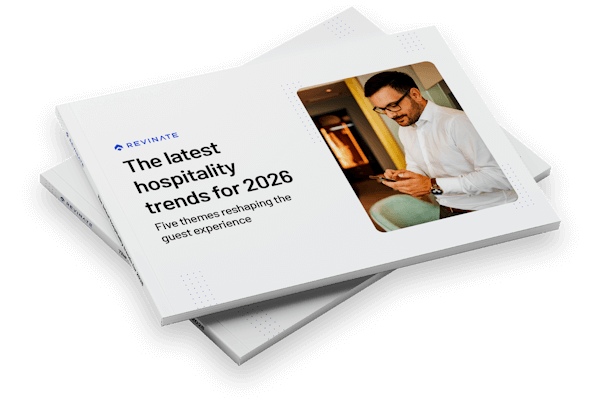Do’s and don’ts of converting travel browsers into bookers
Do’s and don’ts of converting travel browsers into bookers
It happened again: A potential guest landed on your hotel’s website, spent time browsing your room options, checked availability, and even clicked through to your booking engine. But then they left without completing their reservation.
They were so close to booking, so why didn’t they?
These website abandonments are incredibly frustrating when you’re working hard to increase direct bookings. And the challenge of turning lookers into bookers is real for hoteliers — and it’s one of the biggest barriers to increasing direct revenue.
While some drop-off is expected, the uncomfortable truth is that 85% of your potential guests will abandon their carts instead of moving forward with their bookings. And only 2.4% end up completing their booking. But many of these exits are preventable with the right cart abandonment recovery plan in place. You just need to understand what your friction points are and work to eliminate them.
So, let’s take a look at the top do’s and don’ts of converting travel lookers into bookers so you can stop losing direct revenue and begin creating a smoother path for guests from search to stay.
The do’s that turn lookers into bookers
The first step in turning travel lookers into bookers is implementing website best practices known to build drust, reduce friction, and guide guests to confidently complete their reservation. Here are some of the top practices to prioritize.
1. Do streamline the booking experience.
Including too many steps, fields, or pages in your booking engine can leave guests feeling overwhelmed or frustrated and ultimately cause them to abandon their booking. Instead, keep the booking process clean, fast, and simple by using autofill wherever possible and eliminating any distractions that can pull them out of the booking process.
2. Do surface the right trust signals at the right moments.
Today’s travelers prioritize feeling safe when booking online. In fact, more than 70% of travelers revealed they prioritize security over price. You can make your potential guests feel more confident about booking direct with you by displaying security badges, offering “book direct” benefits, and strategically displaying guest reviews on your website — especially near select high-conversion points (near your pricing and form fields).
3. Do personalize the guest experience early.
Don’t wait until guests abandon their carts to personalize their experience. Instead, use dynamic content based on location, behavior, or booking intent to make your website feel personalized and relevant for your potential guests right from the start. Including a “welcome back” message for returning site visitors or a “popular in your area” suggestion can nudge an on-the-fence visitor closer to completing a booking.
4. Do offer perks and incentives for booking direct.
If you’re looking to increase your hotel website conversion rate, it’s important to provide solid reasons for someone to want to avoid becoming an OTA guest. A great way to do this is to clearly show the value of booking direct with you. This can be in the form of offering exclusive discounts, flexible cancellations, upgrades, or even early check-in options.
5. Do use compelling, clear CTAs on your website.
In order to increase your hotel direct booking rate, the calls to action (CTAs) on your website should be highly visible, action-oriented, consistent, and specific. Avoid vague copy like “learn more,” and instead use direct, impactful language like “book this room” or “check availability.”
6. Do clearly display your pricing and availability.
While it’s understandable to be concerned that displaying your pricing too early could cost you a potential booking, the reality is that the opposite is true: A lack of pricing transparency is actually one of the top reasons guests abandon their bookings. So, as part of your direct book strategy, don’t require potential guests to click through multiple screens to discover what their stay will actually cost and make sure guests can quickly and easily see your pricing and availability.
7. Do personalize your website content.
Today’s guests expect tailored experiences during their stay. So, make sure your website reflects your guest segments. You can do this by highlighting family or romantic packages for site visitors browsing weekend stays and featuring business travel perks for weekday stays. Consider who your top guest segments are at different times and showcase offerings tailored to their wants and needs.
The don’ts of hotel website conversions
Now that you know what you should be doing to turn lookers into bookers, let’s take a look at the practices you should avoid. Here are some of the common missteps on hotel websites that cost hoteliers conversions.
1. Don’t forget about mobile UX.
Today’s travelers are on-the-go — and that means they’re more likely to book from their phones than from a desktop. Having poor mobile performance on your website is a conversion killer. If a potential guest experiences slow load times or tough navigation, it can increase their likelihood of booking through an OTA. Make sure your mobile experience is as easy to use as your desktop experience.
2. Don’t overwhelm your lookers with too much information.
You know everything your hotel has to offer — and you want your guests to know, too. But hitting potential guests with all your offerings and once by placing everything on your homepage can be overwhelming and actually push would-be direct bookers to OTAs. Instead, keep your homepage focused on helping guests easily find rooms, see availability, and feel confident about booking with you. Let more detailed information live elsewhere, like in your blog or other pages.
3. Don’t hide fees at checkout.
Surprising a potential guest with extra charges at checkout (like resort fees, cleaning fees, or extra taxes) can cause you to lose a booking at the final step. Showing all your costs early in the booking process builds trust and increases your conversion rate.
4. Don’t miss your remarketing window.
The truth is that not every looker will book on their first visit. So if you’re not capturing their emails and using effective hotel remarketing tactics, you’re missing out on a great chance to re-engage with those potential guests. Build an abandoned cart campaign that allows you to follow up via email, SMS and even phone to increase your conversion rate and recapture a booking.
5. Don’t bombard lookers with aggressive popups.
While capturing leads is important, experiencing popups can cause more friction and ultimately be very offputting to potential guests looking to book. Use popups sparingly — if at all — and time them strategically so they aren’t overly aggressive or appear in the moment before a booking is completed.
6. Don’t rely on false urgency or pressure.
Today’s guests are savvy, so using tactics like “only 1 room left” or “6 people are looking at this room” often backfire. Instead of using these pressure methods, consider using urgency in a more transparent way by promoting real-time offers or limited-time packages.
7. Don’t use generic messaging and CTAs.
While featuring a simple “book now” could work, it’s often not enough. Tailoring the messaging based on the page, guest segment, or even season can be a highly effective part of your booking strategy. Implement timely CTAs like “reserve your holiday stay” or “book your summer getaway” to give guests a more personal experience.
Start turning lookers into bookers today
While there’s no magic button that turns lookers into bookers, implementing a solid direct booking strategy can go a long way. Simplifying the booking process by removing friction points and personalizing a guest’s experience can help you increase your hotel website conversion rate.
Start by implementing the do’s above and avoiding the don’ts to begin building a guest journey that feels smooth, trustworthy, and worthy of guest loyalty.
Want to go even deeper and master cart abandonment recovery?
Complete the cart abandonment module of the Direct Bookings Mastery Certification and learn how to begin driving more direct bookings today.
This site is protected by reCAPTCHA and the Google Privacy Policy and Terms of Service apply. View our Terms & Conditions here. *Required fields.






